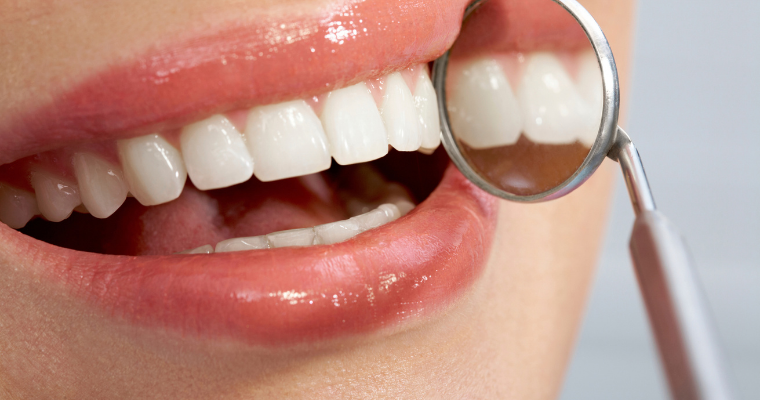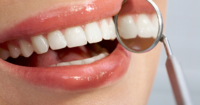
With so many teeth straightening options available today, it definitely can get overwhelming trying to decide which to choose.
But don’t worry!
This quick blog will discuss the characteristics of the five most common types and what sets them apart.
What are the different types of braces?
Through the years, braces have dramatically evolved.
Thankfully, today’s braces are much lighter and smaller than the ones from decades ago.
Some are even clear!
Let’s take a look!
1. Traditional metal braces
This is the most common type of braces in the world.
Metal braces are a good option for adults, teens, and children!
This treatment method is:
- Proven
- Highly predictable
- Versatile
- And the most affordable
With this type, your orthodontist adheres brackets to the surface of each tooth and connects them with an archwire. The wire runs through the brackets and is secured with rubber bands.
You or your child will have the option of customizing your braces with colored rubber bands.
With these intricate pieces, you’ll need to make sure to remove plaque and food particles thoroughly.
And to prevent damage to the delicate equipment, you should avoid foods that are:
- Hard
- Sticky
- Chewy
It’s also recommended that you cut certain foods into bite-sized pieces to maintain the integrity of your braces.
These minor adjustments to your cleaning and dietary habits are just a small price to pay, considering this is one of the most effective methods for straightening teeth!
2. Ceramic braces
This type works just like metal braces.
But:
What makes them unique is that they use clear brackets and wires.
Ceramic braces are most popular if you don’t want clear aligners but still wish to straighten your smile discreetly.
And:
These braces are extremely durable!
But uou’ll still have to be gentle when cleaning and avoid damaging foods with this type of braces.
3. Self-ligating braces
Like ceramic and metal braces, self-ligating braces require brackets and an archwire.
But:
Instead of rubber bands, this type uses doors or clips on the brackets to keep the wire in place.
This allows for a somewhat more discreet appearance than traditional metal braces. And you may choose either metal or ceramic material.
They also may result in slightly less time spent in the chair because of how easy it is to adjust them.
However:
Due to their bracket design, they may
- Offer less precise movements
- Be less effective in rotating larger teeth
Additionally, research… This text opens a new tab to the PubMed website… has shown that you may experience more debonded brackets and other emergency visits with self-ligating braces.
If any components become damaged and require repair, that’ll ultimately slow down treatment.
4. Lingual braces
Lingual braces have all the same elements as metal braces.
But the big difference is that they’re fixed on the back of your teeth, making them another option for anyone who wants to avoid having braceface.
But:
While they can treat most dental issues, this treatment isn’t for everyone.
If you have a very deep overbite, your brackets may pop off more frequently.
Also, you’re more likely to develop a lisp with this type of braces. Your tongue will hit the back of your teeth and the brackets when you’re speaking.
5. Clear aligners
This type of braces has become incredibly popular in the last twenty years.
Clear aligners such as Invisalign® are made of soft, smooth material instead of the typical wires and brackets. Your orthodontist can prescribe precise tooth movements by creating custom trays that fit snugly over your teeth.
Adults and teenagers turn to Invisalign because it’s:
- Virtually invisible
- Removable
- More comfortable than other methods
- More effective than other aligner brands
- And it fixes most common dental issues
This option is great for anyone who wants to undergo treatment discreetly. People will hardly be able to tell you’re wearing the trays!
And you can remove the trays, which means they’re easy to clean and won’t restrict you from eating or drinking normally.
For the best results, you should wear your aligners for 20-22 hours per day. You’ll insert a new set of aligners every one to two weeks to progress through your treatment.
Who can wear braces?
You may benefit from braces if you have:
- Crooked teeth
- Gapped teeth
- Overbite
- Underbite
- Crossbite
- Openbite
And don’t forget:
It’s never too late to straighten your smile!
Need an orthodontist in Bellevue?
Our team at Schur Orthodontics can assist you!
Our smile expert, Dr. Jeff Schur, will partner with you to create a treatment plan that best suits your needs.
We offer three of the top types of braces, including:
To see if you’re a candidate for braces, request a consultation today.
Or:
- Book a virtual consultation
- Call us at (425) 747-4477
- Email us at info@schurorthodontics.com
Schur Orthodontics is located in Bellevue, WA… This text opens a new tab to our Google listing…, and sees patients from all over the area, including Redmond, Kirkland, Seattle, Renton, Eastside, and Woodinville.


